Petricola vs. Longirostrus & a butterfly bushynose pleco
-
toddnbecka
- Posts: 133
- Joined: 26 Oct 2004, 08:49
- My cats species list: 1 (i:0, k:0)
- Location 1: Cumberland, MD
- Interests: Synodontis
-
javelin69
- Posts: 32
- Joined: 30 Jul 2006, 10:47
- Location 1: Pearl City, Hawaii
- Interests: ice hockey, archery, aquariums, bowling
Ok guys,
I need some chim-ins on this one. I finally got the final contestants down for my community tank.
2 yellow labs
2 electric blue's
2 german red peacocks -if I can find them if not (ob peacocks)
1 Forntosa ( in a year or so will move to bigger tank)
2 Julie's don't know which ones yet
1 bushy nose pleco
3 petricola catfish
Does this seem over crowded? Thanks again guys!
Ron
I need some chim-ins on this one. I finally got the final contestants down for my community tank.
2 yellow labs
2 electric blue's
2 german red peacocks -if I can find them if not (ob peacocks)
1 Forntosa ( in a year or so will move to bigger tank)
2 Julie's don't know which ones yet
1 bushy nose pleco
3 petricola catfish
Does this seem over crowded? Thanks again guys!
Ron
-
Reginator
- Posts: 157
- Joined: 20 Jun 2006, 16:55
- My cats species list: 14 (i:0, k:0)
- My aquaria list: 2 (i:1)
- Location 1: Valencia, Spain
- Location 2: Valencia, Spain
A bit late in this thread, but for rocks if you live in Hawaii you've got an enormous supply! Just get some lava rock (from flows more than a few decades old), wash it with baby bottle steriliser and then rinse it really well. You should then be able to carve holes/caves in it fairly easily with a chisel. I have a few bits of lava a friend brought me from the canary islands in a tank of mine, they've been there for 8 months and have given me no trouble at all 
Regarding your African cichlid stocking...
Add 4 more yellow labs
Not sure if you need additional females for the german red peacocks.
Definitely move the Frontosa
Keep only the 2 Julie's
1 bushy nose pl*co is fine
Add 2 or 3 petricola catfish
Regarding the electric blues, is this Sciaenochromis Fryeri? If yes, this fish may be too big for your tank. You should keep a minimum of three females for every male to avoid the male killing the females. I don't know enough much about this fish to know if you could keep a single male in a community like this.
You will get better answers if you post to a cichlid forum.
Add 4 more yellow labs
Not sure if you need additional females for the german red peacocks.
Definitely move the Frontosa
Keep only the 2 Julie's
1 bushy nose pl*co is fine
Add 2 or 3 petricola catfish
Regarding the electric blues, is this Sciaenochromis Fryeri? If yes, this fish may be too big for your tank. You should keep a minimum of three females for every male to avoid the male killing the females. I don't know enough much about this fish to know if you could keep a single male in a community like this.
You will get better answers if you post to a cichlid forum.
- 24tropheus
- Posts: 34
- Joined: 16 Jul 2006, 00:50
- My cats species list: 1 (i:0, k:0)
- My aquaria list: 1 (i:0)
- Location 1: London UK
- Interests: SCUBA
Kept single ones (many Aulonocara ok as single fish)in tanks of that size with other fish, as long as there are no other simalar fish or these are small rock dwelling types and got lots of cover it seems ok. Aulonocara can be bullied by mbuna but labs usualy ok. Electric blue agree tank prob too small for more than one of this sort of fish when adult unless your an expert at handling agression and have other tanks to rescue or keep them crowded ect but it could be so many different fish?????????with that common name. I would go for just one type of open water smallish Peacock or Otopharynx blue face/heterodon or lithobates.
Frontosa definatly a prob eating stuff as it grows plus likey to be bullied when small. Best in a species tank or in larger tank with carfully selected fish. labs (boost numbers to 8 I think 1-2 males +6-7 females best if you can manage it) will dispute the cave space with Synos but prob without to much hassle/damage. Try Lamprologus sexfasciatus or tretocephalus (single only in that size tank unless if you want something a bit Frontosa look alike that will look after itself when small and not be a prob when adult if it has a good cave.
Angelicus cat, I think could be good in there too.
What filtration you got and what waterchange regime you use and whats your tap water nitrate reading all have a big impact on what you can keep in a tank of that size.
Pairs of cichlid mouthbrooders nearly always a bad idea. One with about 5 females or lots of males with 3 or more females per male ish or just lots of different males all better. May be best to decide via your pH whether all Tangs or all Malawis best for you.
Lots of people mix cats and cichlids its a real problem getting good advice on this. Any suggestions? Cichlid sites catfish a dirty word and catfish sites cichlid a dirty word. Why? Coral often scratches mouthbrooders and can be a bad idea as can lava rock unless you smooth it off very well first.
Frontosa definatly a prob eating stuff as it grows plus likey to be bullied when small. Best in a species tank or in larger tank with carfully selected fish. labs (boost numbers to 8 I think 1-2 males +6-7 females best if you can manage it) will dispute the cave space with Synos but prob without to much hassle/damage. Try Lamprologus sexfasciatus or tretocephalus (single only in that size tank unless if you want something a bit Frontosa look alike that will look after itself when small and not be a prob when adult if it has a good cave.
Angelicus cat, I think could be good in there too.
What filtration you got and what waterchange regime you use and whats your tap water nitrate reading all have a big impact on what you can keep in a tank of that size.
Pairs of cichlid mouthbrooders nearly always a bad idea. One with about 5 females or lots of males with 3 or more females per male ish or just lots of different males all better. May be best to decide via your pH whether all Tangs or all Malawis best for you.
Lots of people mix cats and cichlids its a real problem getting good advice on this. Any suggestions? Cichlid sites catfish a dirty word and catfish sites cichlid a dirty word. Why? Coral often scratches mouthbrooders and can be a bad idea as can lava rock unless you smooth it off very well first.
-
javelin69
- Posts: 32
- Joined: 30 Jul 2006, 10:47
- Location 1: Pearl City, Hawaii
- Interests: ice hockey, archery, aquariums, bowling
The day finally came!
Yahoooooooooo, i went to the lfs and finally got myself started on my shopping spree of fihies. I picked up today the small guys first to let them have a runningstart at the tank. I got my Petricol's and my Butterfly bushynose. All are doing good in the tank and seem to be having fun. When th elights ar eout the pleco comes out to say hi, but other than the he stays away. Now th ePetricola's, there just having a blast swimming all around, up and down chasing wach other around the rocks and thru them as well. It's very relaxing! I'll try to get up some new photo's of the kids as soon as possible. The tank has changed as well since the last photo's. Lastly, the bn is roughly 2.5-3in., while the petricola's the smallest being 1.5and the biggest around 2". Take care everyone and thanks again for all the help and suggestions!
Yahoooooooooo, i went to the lfs and finally got myself started on my shopping spree of fihies. I picked up today the small guys first to let them have a runningstart at the tank. I got my Petricol's and my Butterfly bushynose. All are doing good in the tank and seem to be having fun. When th elights ar eout the pleco comes out to say hi, but other than the he stays away. Now th ePetricola's, there just having a blast swimming all around, up and down chasing wach other around the rocks and thru them as well. It's very relaxing! I'll try to get up some new photo's of the kids as soon as possible. The tank has changed as well since the last photo's. Lastly, the bn is roughly 2.5-3in., while the petricola's the smallest being 1.5and the biggest around 2". Take care everyone and thanks again for all the help and suggestions!
- apistomaster
- Posts: 4735
- Joined: 10 Jun 2006, 14:26
- I've donated: $90.00!
- My articles: 1
- My cats species list: 12 (i:0, k:0)
- My Wishlist: 1
- Location 1: Clarkston, WA, USA
- Location 2: Clarkston, WA, USA
- Interests: Aquaculture and flyfishing
Butterfy Plecos are not long finned versions of bn. They are another species of imported pecoltia type pleco with brown and light tan banded patterns sold commercially as butterfly plecos. Any number of Genera and or species may be sold under this name but I repeat they are not the familiar tr variants of Ancistrus sp. 2 or 3. For example see photos listed by http://www.somethingsphishy.com for a photo of a butterfly pleco.
Avid Trout fly fisherman. ·´¯`·...¸><)))º>
-
javelin69
- Posts: 32
- Joined: 30 Jul 2006, 10:47
- Location 1: Pearl City, Hawaii
- Interests: ice hockey, archery, aquariums, bowling
Then what type of pleco is it? It's got brown wth light brown or tan spots. The fins are long and they have the same coloring but in a striped pattern. I've tried to take pictures, but the pleco is a bit on the small side, around 3.5 inches. I know a picture would help alot so I'll try to get one online!
Thanks.
Ron
Thanks.
Ron
- apistomaster
- Posts: 4735
- Joined: 10 Jun 2006, 14:26
- I've donated: $90.00!
- My articles: 1
- My cats species list: 12 (i:0, k:0)
- My Wishlist: 1
- Location 1: Clarkston, WA, USA
- Location 2: Clarkston, WA, USA
- Interests: Aquaculture and flyfishing
It's spotted and long finned it must be a BN. Only bn have the long finned mutation fixed and are very common. Common names are useless. It must be Ancistrus sp 2 or 3. The other "butterfly" plecos are wild caught fish and are typically more flattened in shape and have distict bands without spotted patterns. BN are capable of changing color to better suit the background and can be lighter or darker but always spotted. Even the albino varieties retain a spotted pattern. It is entirely plausable that an imaginative dealer would use the appellation "butterfly" to a long finned BN as it's used for long finned Koi, eg. butterfly Koi. The odds of your fish being a tank raised BN variant are overwhelming.Also the commercial butterfly pleco will typically cost twice as much as a common long fin BN. If your fish was close to $20 including the Hawaii surcharge its a BN. If it was $40-$50 then it probably is the wild caught "butterfly" but it's fins will not be extra long. BN are even wild in Hawaiian resevoirs besides being tr in quantities. Until you get a chance to post a photo did you compare your fish to those on the website I mentioned? Does your fish look like those "butterflies"?
Avid Trout fly fisherman. ·´¯`·...¸><)))º>
- apistomaster
- Posts: 4735
- Joined: 10 Jun 2006, 14:26
- I've donated: $90.00!
- My articles: 1
- My cats species list: 12 (i:0, k:0)
- My Wishlist: 1
- Location 1: Clarkston, WA, USA
- Location 2: Clarkston, WA, USA
- Interests: Aquaculture and flyfishing
It's spotted and long finned it must be a BN. Only bn have the long finned mutation fixed and are very common. Common names are useless. It must be Ancistrus sp 2 or 3. The other "butterfly" plecos are wild caught fish and are typically more flattened in shape and have distict bands without spotted patterns. BN are capable of changing color to better suit the background and can be lighter or darker but always spotted. Even the albino varieties retain a spotted pattern. It is entirely plausable that an imaginative dealer would use the appellation "butterfly" to a long finned BN as it's used for long finned Koi, eg. butterfly Koi. The odds of your fish being a tank raised BN variant are overwhelming.Also the commercial butterfly pleco will typically cost twice as much as a common long fin BN. If your fish was close to $20 including the Hawaii surcharge its a BN. If it was $40-$50 then it probably is the wild caught "butterfly" but it's fins will not be extra long. BN are even wild in Hawaiian resevoirs besides being tr in quantities. Until you get a chance to post a photo did you compare your fish to those on the website I mentioned? Does your fish look like those "butterflies"?
Avid Trout fly fisherman. ·´¯`·...¸><)))º>
-
javelin69
- Posts: 32
- Joined: 30 Jul 2006, 10:47
- Location 1: Pearl City, Hawaii
- Interests: ice hockey, archery, aquariums, bowling
The coloring is not even close to mines, also the fins are alot shorter. I'm guessing like you said it must be a wild one. Mines was $49.99, and the albino version was $59.99 I tried to take a pic lastnight but he won't stay still in front for very long. his head isn't a pronouced as like the common or royal pleco, it's a bit more on the flat side.
-
toddnbecka
- Posts: 133
- Joined: 26 Oct 2004, 08:49
- My cats species list: 1 (i:0, k:0)
- Location 1: Cumberland, MD
- Interests: Synodontis
-
javelin69
- Posts: 32
- Joined: 30 Jul 2006, 10:47
- Location 1: Pearl City, Hawaii
- Interests: ice hockey, archery, aquariums, bowling
toddnbecka wrote:It's a longfin Ancistrus, should be fine in your tank, provided the other fish don't tear up the fins.
You guys are right! I checked it out and as far as I can tell, he/ or she looks like a Ancistrus sp3, Veiltail. the markings and coloring are like dead on! Thanks for the help! I'm hoping it will do fine. So far so good. So far I tried to feed them Tetra's sinking wafers and neither the Petricola's or the bn ate anything. How long should I wait before I start to get worried? Today is the first full day they've been in the tank, and there the only ones inside it.apistomaster wrote:It's spotted and long finned it must be a BN. Only bn have the long finned mutation fixed and are very common. Common names are useless. It must be Ancistrus sp 2 or 3.
-
toddnbecka
- Posts: 133
- Joined: 26 Oct 2004, 08:49
- My cats species list: 1 (i:0, k:0)
- Location 1: Cumberland, MD
- Interests: Synodontis
-
Marc van Arc
- Expert
- Posts: 5038
- Joined: 19 Dec 2004, 14:38
- My articles: 20
- My images: 61
- My catfish: 9
- Spotted: 35
- Location 2: Eindhoven, The Netherlands
-
javelin69
- Posts: 32
- Joined: 30 Jul 2006, 10:47
- Location 1: Pearl City, Hawaii
- Interests: ice hockey, archery, aquariums, bowling
Ya I did. Was I ripped off?Marc van Arc wrote:Ron,
Do I understand correctly that you had to pay 50 dollars for that BN??
Will the petrcola's eat the zuccini as well? I did notice thou, that my little grove of live plants no longer has algae on it, so I'm wondering if he/she is the little culprit?toddnbecka wrote:They may take a couple days to settle before they eat. pl*co's like veggies as well, a slice of zucchini or some blanched spinach...
-
Marc van Arc
- Expert
- Posts: 5038
- Joined: 19 Dec 2004, 14:38
- My articles: 20
- My images: 61
- My catfish: 9
- Spotted: 35
- Location 2: Eindhoven, The Netherlands
Ummmm... the situations are perhaps incomparable. 20 usd for a petricola sounds fair, provided they are of medium size.javelin69 wrote:Ya I did. Was I ripped off?The bn was $50, and the Petricola's $20 a piece.
But if someone overhere would ask 50 usd for a long finned BN, I'm afraid customers would be laughing their heads off when confronted with such a ridiculous price....
So were you ripped off? Don't know, perhaps it's a fair price in the US?
-
toddnbecka
- Posts: 133
- Joined: 26 Oct 2004, 08:49
- My cats species list: 1 (i:0, k:0)
- Location 1: Cumberland, MD
- Interests: Synodontis
-
BrownBullhead
- Posts: 51
- Joined: 10 Feb 2003, 00:05
- My cats species list: 2 (i:0, k:0)
- Location 1: Manitoba, Canada
- Location 2: Manitoba, Canada
Panaque Nigrolineatus... Sometimes you will see "spotted", "striped", "xingu", etc. variants as advertised. Start with the above scientific name and you will learn much from that point forward.javelin69 wrote:Also, have you guys ever heard of the Royal pl*co? If so what's it regualr name? Thanks again for all the help guys!
Robert ["BrownBullhead"]
-
BrownBullhead
- Posts: 51
- Joined: 10 Feb 2003, 00:05
- My cats species list: 2 (i:0, k:0)
- Location 1: Manitoba, Canada
- Location 2: Manitoba, Canada
Is he referring to perhaps Ancistrus Temminicki? That is the species that seems to sell as "Bristlenose Pleco" around my area. It seems every cichlid keeper has one or more of them, for algae control. They seem to adapt to hard water and some of the rift lake keepers have even experienced spawns from their specimens.Marc van Arc wrote:Besides, it comes from an African rift lake (Tanganjika) and needs other water parameters than riverine species.
I would say $50 for a BN is expensive no matter how you look at it. A "Medusa Pleco" (L-034) sells for around $30 US here, but I wouldn't think of keeping those in a Rift Lake setup as I think they would not do well.
Robert ["BrownBullhead"]
- sidguppy
- Posts: 3827
- Joined: 18 Jan 2004, 12:26
- My articles: 1
- My images: 28
- My aquaria list: 5 (i:0)
- Spotted: 9
- Location 1: Southern Netherlands near Belgium
- Location 2: Noord Brabant, Netherlands
- Interests: African catfishes and oddballs, Madagascar cichlids; stoner doom and heavy rock; old school choppers and riding them, fantasy novels, travelling and diving in the tropics and all things nature.
- Contact:
What's usually for sale as A temmincki is the same as Ancistrus sp 3 and it's a hardy captive-bred fish that easily survives in a Rifttank (Tanganyika or Malawi).
the longfin or veilteil is a breedable form of this species, ditto the albino Ancistrus or the Pie-bald variety.
That's why I call them Ancistrus 'domesticus'; it's a domesticated form (and maybe even a hybrid species), suitable for almost any tank.
the longfin or veilteil is a breedable form of this species, ditto the albino Ancistrus or the Pie-bald variety.
That's why I call them Ancistrus 'domesticus'; it's a domesticated form (and maybe even a hybrid species), suitable for almost any tank.
Valar Morghulis
-
Marc van Arc
- Expert
- Posts: 5038
- Joined: 19 Dec 2004, 14:38
- My articles: 20
- My images: 61
- My catfish: 9
- Spotted: 35
- Location 2: Eindhoven, The Netherlands
No, in the quoted phrase I was referring to Synodontis petricola.BrownBullhead wrote:Is he referring to perhaps Ancistrus Temminicki? That is the species that seems to sell as "Bristlenose pl*co" around my area.Marc van Arc wrote:Besides, it comes from an African rift lake (Tanganjika) and needs other water parameters than riverine species.
- MatsP
- Posts: 21038
- Joined: 06 Oct 2004, 13:58
- My articles: 4
- My images: 28
- My cats species list: 117 (i:33, k:0)
- My aquaria list: 10 (i:8)
- My BLogs: 4 (i:0, p:164)
- Spotted: 187
- Location 1: North of Cambridge
- Location 2: England.
is one of a few names commonly used for . However, there's absolutely no certainty that it is this species [it is also sometimes called A. dolichopterus, which is obviously the wrong name for a brown fish with lighter brown spots, when the fish described originally is blue-black with white spots!]BrownBullhead wrote:Is he referring to perhaps Ancistrus Temminicki? That is the species that seems to sell as "Bristlenose pl*co" around my area.
--
Mats
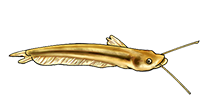





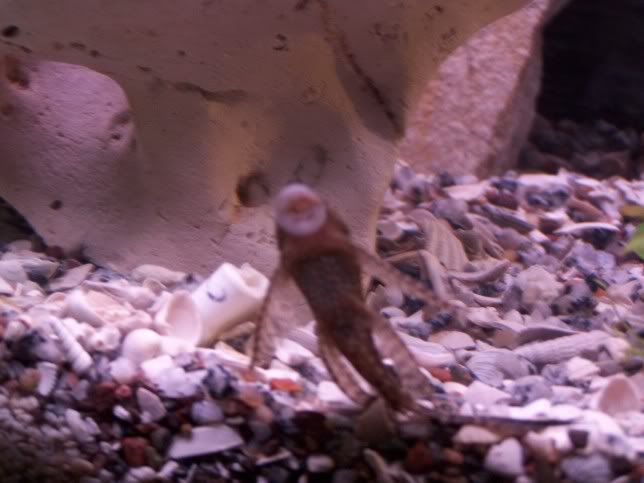
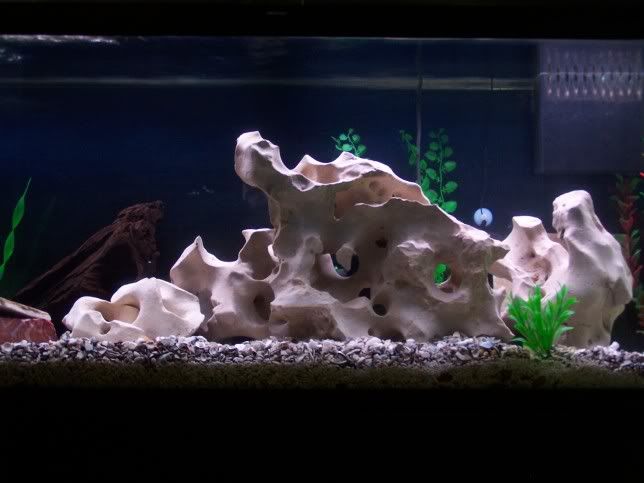
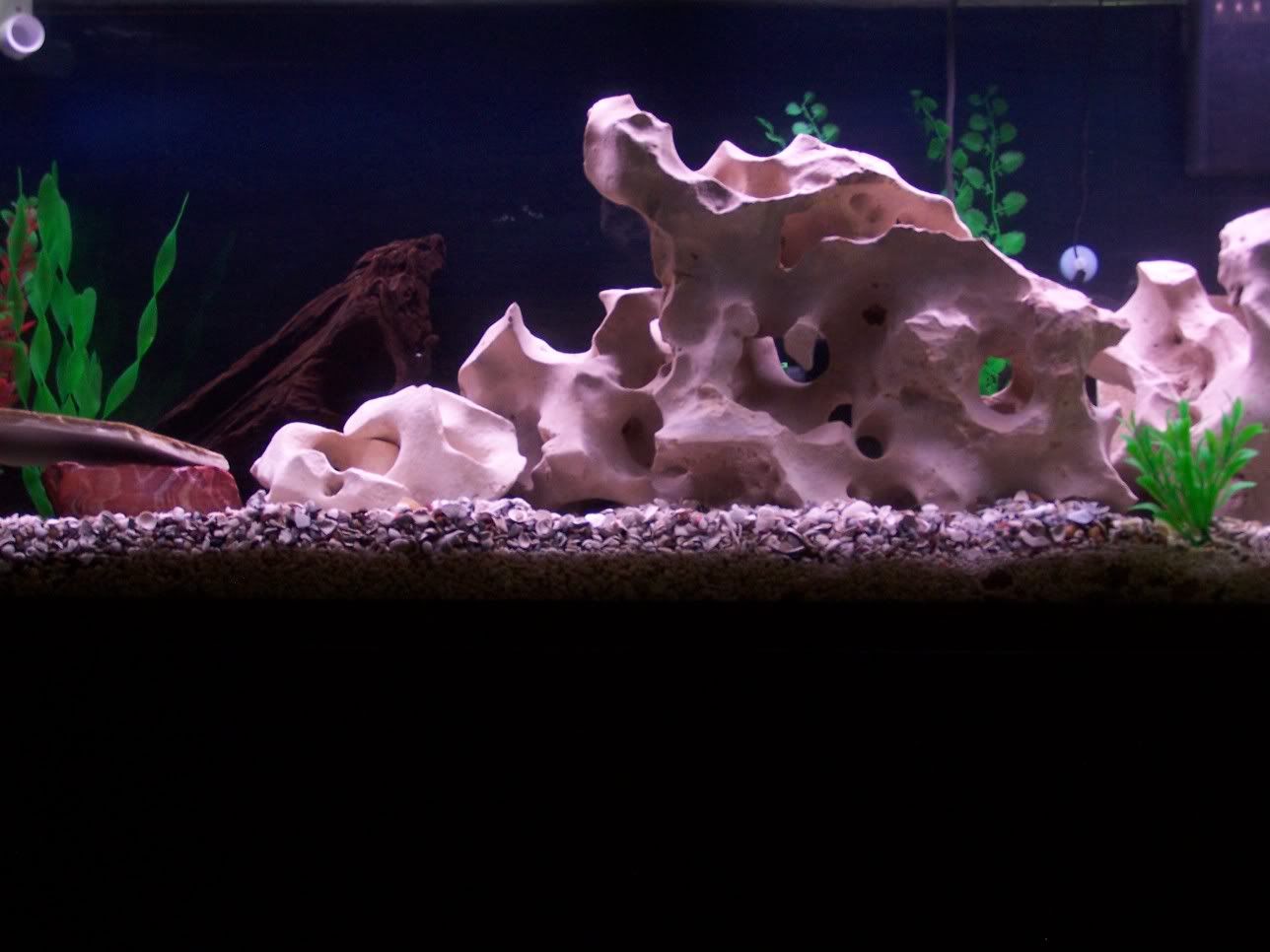
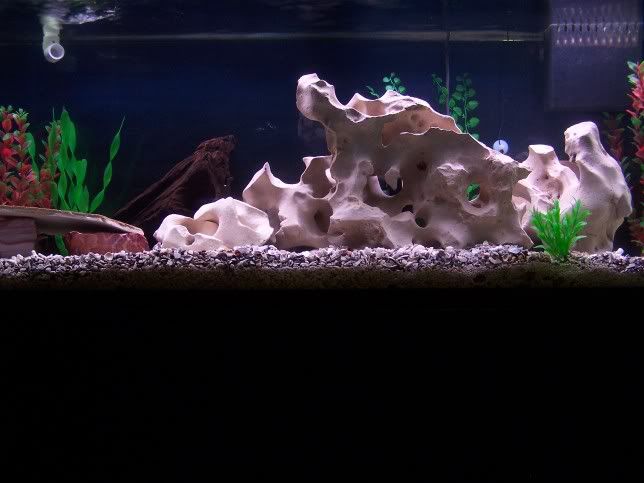
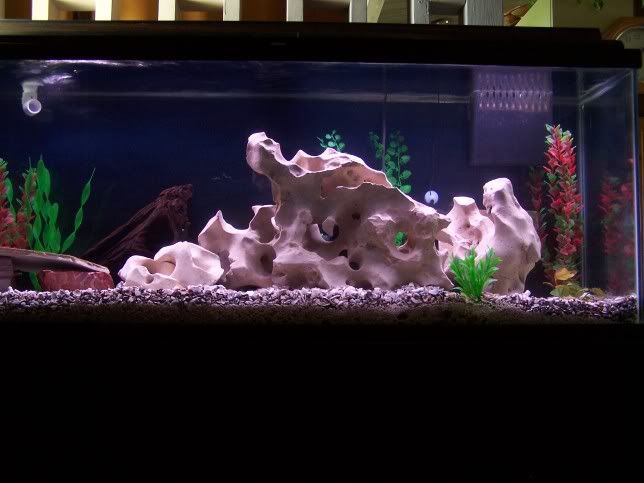

/g/s/1.jpg)